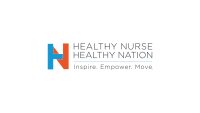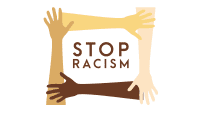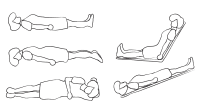Videos educate patients while meeting students’ learning needs.
Editor’s note: This is an early release of an article for the May 2021 issue of American Nurse Journal.
Even in the best of times, individuals with cognitive disabilities are among the most vulnerable when it comes to healthcare access and chronic disease risk. The COVID-19 pandemic has added to their health concerns because of work and home situations as well as comorbidities that place them at higher risk for the virus. (See A population at risk.)
A population at risk
According to the World Health Organization, 15% of the global population has some type of disability. In the United States, one in four individuals have a cognitive, vision, hearing, mobility, self-care, or independent living disability.
Living (close contact with caregivers, group housing) and working (essential worker jobs) conditions place many people with cognitive disabilities at increased risk for a variety of chronic diseases and conditions, including obesity, hypertension, diabetes, and depression.
In addition, this patient population is at risk of isolation, loneliness, and depression due to high stress rates and feelings of separation, particularly in the midst of social distancing and quarantine requirements related to COVID-19.
The pandemic changed the landscape for all patient populations, and those living with disabilities are no exception. It also changed how nursing school programs ensure students accomplish their clinical training. The faculty at Auburn University School of Nursing (AUSON), in Alabama, developed a creative program using videos to support clinical partners in the midst of the pandemic to ensure community members with cognitive disabilities receive the care they need and to support nursing students in their clinical education.
Education via video addresses many current needs, including social distancing requirements. It also provides a safe space for individuals with cognitive disabilities who may be hesitant to interact socially, especially with unfamiliar people. In addition, videos can be viewed at home or in the community setting easily, and they can be re-watched as needed to provide skill continuity.
A creative approach
AUSON works with several community organizations that serve individuals with cognitive disabilities. Faculty reached out to these clinical partners to assess participant and caregiver needs. Some of the partners work with individuals with varying abilities, and one is an organization at the university that supports students with disabilities. Their needs varied, but most of their activities had been converted to virtual participation. They sought ways to engage participants while providing meaningful health promotion activities.
After interviewing the community partners, faculty developed a clinical assignment for 112 students in their first semester of the baccalaureate nursing program. The first step was to teach students effective communication skills when working with individuals with cognitive disabilities. Faculty and community partners created a 25-minute video, which was viewed by the students to prepare them for the assignment. (See Effective communication.)
Effective communication
Many individuals with cognitive disabilities have difficulty understanding information presented to them and, depending on the type of disability, they may not be understood by others. Communication training is key to successful encounters between healthcare providers and individuals with cognitive disabilities.
Before working with patients with disabilities, nurses should be trained in effective communication principles and styles, including the following:
- Speak slowly and directly to the individual.
- Attempt to make eye contact.
- Incorporate pauses to allow the individual time to process what you said.
- Use short, clear sentences with simple words.
- Don’t overwhelm the individual with too much of information all at once.
If you don’t understand the patient, don’t pretend that you do. This is disrespectful and devalues the communication. Help the patient communicate in other ways, such as drawing or writing.
After viewing the video, student clinical teams (groups of 10 to 12 students) received a topic identified by the community partner as an area for growth for participants. Each topic (which focused on health promotion and chronic disease and COVID-19 prevention) had an objective with a measurable goal (see Health topics.)
Health topics
Teams of nursing students participating in the outreach program were given a health topic and learning objective on which to focus their video. Topics and objectives were drawn from the list below.
| Topic | Learning objective |
| Exercise | Participants should be able to verbalize the difference between aerobic and anaerobic exercise. |
| Handwashing | Participants should be able to demonstrate correct handwashing technique. |
| Healthy eating | Participants should be able to select at least one additional healthy food option to incorporate into their meals. |
| Laundry | Participants should be able to demonstrate how to separate their clothes in appropriate washing piles. |
| Personal and dental hygiene | Participants should be able to describe three daily steps they can take to improve personal hygiene. |
| Sleeping habits | Participants should be able to list three actions they can take to increase their sleep quality. |
| Sun and outdoor safety | Participants should be able to verbalize three ways to stay safe while outdoors and in the sun. |
The teams developed and filmed a 5-minute video addressing the assigned topic using the communication styles they learned. Students were challenged to be as creative as possible (using avatars, background music, or simply themselves dressed in their nursing uniforms). They recorded the videos using their phones or laptops and then converted them to YouTube or an Apple movie. The students also developed three post-viewing questions for participants that they included at the end of the video or posted in a document.
Videos and questions were sent to community partners where participants viewed them with their caregivers at weekly Zoom sessions. With the community partner and nursing faculty, the participants answered the post-viewing questions as a group using a Kahoot game (an online gaming platform) to assess the knowledge gained and retained from the videos.
Positive outcomes
AUSON student teams created 12 videos for community partners. At the end of the semester, participants played the Kahoot games again to see how much information they retained from the videos. Approximately 50% of the questions during the review session were answered correctly. The other 50% were discussed, and clarification was given if needed. Overall, participants remained engaged and enjoyed the videos.
The program gave students an opportunity to learn strategies for communicating with individuals with cognitive disabilities while reinforcing health promotion topics. They’ll use the communication skills they learned throughout their nursing careers. The program also allowed AUSON to continue to share accurate, timely, concise health education, even in the midst of a global health crisis.
Challenges and opportunities
Information was successfully disseminated using videos, but it was provided virtually and asynchronously. In addition, students couldn’t attend the weekly Zoom session with participants because of schedule conflicts. As a result, students weren’t able to use their new communication skills in real time. More in-person clinical experiences should be offered to these students to ensure their ability to apply these communication principles. However, if face-to-face clinical experience continues to be challenging because of COVID-19, student schedules should be adjusted so they can attend the weekly Zoom sessions and apply their communication skills. In addition, the students will find it rewarding to see how happy their videos make the program participants and caregivers.
Videos provide a safe option for sharing information with this patient population, but more formalized evaluation should be used in the future. Participants answered post-viewing questions in a group setting instead of as individuals. Faculty noted that some participants were swayed by majority consensus. In some cases, they had correct answers but then changed them based on what others said. Individual participant evaluation may aid more accurate assessment of information recall.
Skills and creativity
When planning this type of outreach opportunity to individuals with cognitive disabilities, schools of nursing must ensure students not only understand how to disseminate health promotion information in a variety of formats but also how to communicate it effectively. The AUSON program provided students with the skills they need to effectively communicate preventive measures and then allowed them to use their creativity to develop engaging videos.
Amy M. Curtis and Kelly P. Strickland are assistant clinical professors at Auburn University School of Nursing in Auburn, Alabama.
References
Alexander R, Ravi A, Barclay H, et al. Guidance for the treatment and management of COVID-19 among people with intellectual disabilities. J Policy Pract Intellect Disabil. 2020;17(3):256-69. doi:10.1111/jppi.12352
Centers for Disease Control and Prevention. Disability and data health system. September 16, 2020. dhds.cdc.gov
National League for Nursing. Communicating with people with disabilities. 2017. nln.org/professional-development-programs/teaching-resources/ace-d/additional-resources/communicating-with-people-with-disabilities
Neece C, McIntyre LL, Fenning R. Examining the impact of COVID-19 in ethnically diverse families with young children with intellectual and developmental disabilities. J Intellect Disabil Res. 2020;64(10):739-49. doi:10.1111/jir.12769
Thompson JR, Nygren MA. COVID-19 and the field of intellectual and developmental disabilities: Where have we been? Where are we? Where do we go? Intellect Dev Disabil. 2020;58(4):257-61. doi:10.1352/1934-9556-58.4.257
Tummers J, Catal C, Tobi H, Tekinerdogan B, Leusink G. Coronaviruses and people with intellectual disability: An exploratory data analysis. J Intellect Disabil Res. 2020;64(7):475-81. doi:10.1111/jir.12730
World Health Organization. Disability and health. December 1, 2020. who.int/news-room/fact-sheets/detail/disability-and-health
World Health Organization. Disability considerations during the COVID-19 outbreak. 2020. who.int/docs/default-source/documents/disability/eng-covid-19-disability-briefing-who.pdf?sfvrsn=963e22fe_1


















